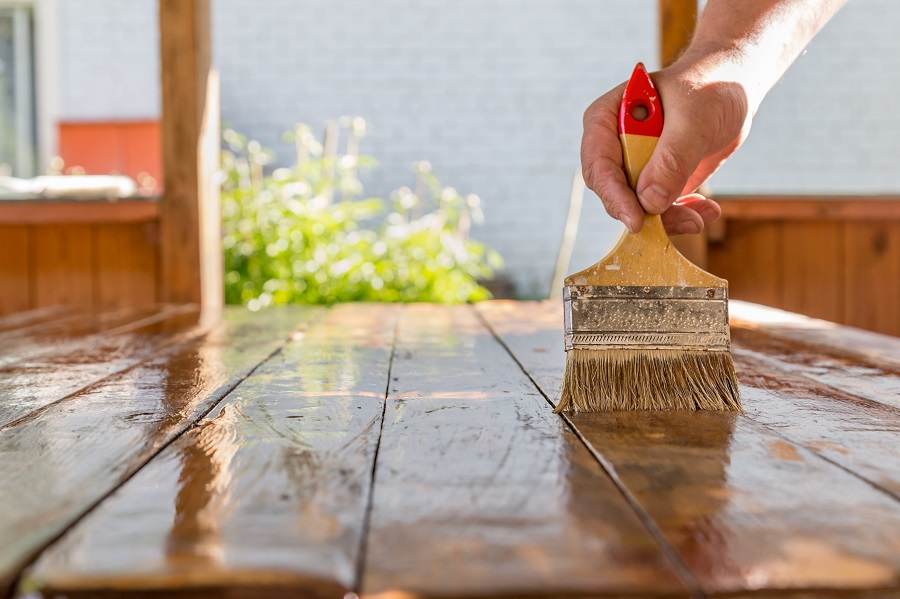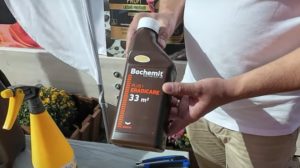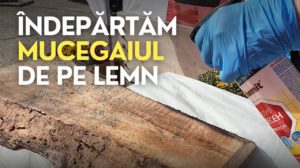Not infrequently I have come across this idea that furniture will be pleasant to the touch and will look good just by applying successive coats of varnish without doing anything else. Unfortunately, there are also very good carpenters who treat the finish superficially, losing sight of the fact that the finish, along with the design, is the first thing to be seen. And you can feel it when it comes to the finish, because if you touch the surface of a piece of furniture and it scratches you, you will immediately give up the idea of buying it. This is as true for solid wood or veneered panel furniture as it is for MDF furniture. To make the surface smooth and pleasant to the touch, it is not enough to sand the wood, the intermediate layers applied must also be sanded. The person asking the above question was a beginner and feared that sanding would remove the applied layer completely. By using the right materials, not only will the primer or varnish coat not be totally removed, but it will be nice and smooth to the touch.

Why the surface is unpleasant to the touch
To understand the phenomenon we need to see what happens before the finishing materials are applied. Surfaces are sanded to make the wood look and feel good, but also to open up the grain so that the materials to be applied can be absorbed. This absorption depends on colouring, aderation (bonding) of varnish layers and wood protection. Sanding sandpaper with a specific grit allows us to control the absorption so that the wood will be evenly stained and the topcoat will cling to the wood and resist mechanical aggression, continuing to protect it.
When absorbing the material, the wood fiber rises. The phenomenon is more pronounced if the materials are diluted with water (water-based varnishes or varnishes). Water is part of the "being" of wood and its deep absorption is natural. Raised fiber is coated with primer/lacquer/paint and becomes stiff after drying. To smooth the surface, sand with finer sanding paper (see below) suitable for such materials. Do not sand after sanding unless recommended by the manufacturer. Plain beads are sensitive and sanding may remove color.
Another reason for sanding is removing dust embedded in the film or air bubbles formed. And they feel just as unpleasant when you touch the surface. Dust is the declared enemy of finishing. Film-forming finishing products - primers, varnishes, paints - do not dry instantly, and while they remain wet, dust particles settle and become embedded. Dust embedded in the last layer of varnish or paint is removed by polishing. Information about this procedure here.
Air bubbles in the film occur especially with finishing materials that dry quickly and do not allow time for air to escape. Air occurs in the application process (air from spraying, air between the brush bristles) or from the pores of the wood. If the pores of the wood are large and the lacquer applied is viscous, the phenomenon is very visible. During the drying process the air tends to escape and moves towards the surface. In the meantime the varnish dries and small bumps form in the film, which are disturbing to the touch, but are removed by sanding.
Sanding between layers is also done to remove the effect of orange peel. Even if it is not noticeable to the touch, the varnished surface does not have a pleasant appearance, and the defect is all the more visible the glossier the varnish. With sanding, the defect is removed, the surface becomes flat and the gloss of the varnish is pleasantly visible.
How to sand between coats
Sanding between coats is done with sandpaper with a minimum grit size of 240. For best results, 280 or 320 grit sandpaper is recommended if the final lacquer or paint is matt and over 400 grit if glossy. Best results are obtained if every intermediate layer is sanded. Professional finishes are done with 1-3 coats of primer before the final coat of lacquer or paint. Primer is much easier to sand compared to lacquer because the latter is the final coat and is designed not to scratch. Also, a coat of primer is thicker than a coat of varnish, allowing it to be sanded intensively and to produce the flattest, flawless surfaces. This is how furniture factories achieve those perfect surfaces that are very pleasant to the touch.
Products in DIY stores are made to be applied as simply as possible with the assumption that they will be used at home for personal projects. This is why manufacturers often do not have primer and varnish systems, but a single product, varnish or paint, which is applied in 2-3 successive coats. This does not mean that the intermediate coats of varnish should not be sanded. Sanding between coats is mandatory to achieve a nice textured surface. Also for the sake of simplicity, such shops sell sanding sponges which, like sandpaper, do not have a number but are coarse or fine. For sanding the intermediate layers use fine abrasive sponges.
Sand intermediate surfaces intensively and only after drying is complete. The sanding should result in a fine white layer (colored in the case of colored primers or paints) and the paper should not become gummed, gummy or sticky. This means that the material has not dried properly. After sanding, remove the resulting dust with a soft dry cloth.
Manual sanding can also be done with sanding machines. There are machines that do the sanding with a rotating motion or have the motion parallel to the side of the machine. In my opinion, the latter are more suitable, especially for a beginner. With the others, it is possible to leave visible traces of sanding in the form of circles. Use sandpaper of the same grit as above.
The final quality of the varnish or paint film depends on how the sanding is done, both of the wood and of the intermediate layers. By ignoring these steps, you will not be able to produce objects that you will enjoy touching. Sanding is a very important part of wood finishing and it's a good idea to find out about mistakes that are made when finishing by hand and how to choose wood sanding abrasives. If you have any additions, questions or clarifications, leave them below, in the dedicated space. I will answer you for sure.




































Add comment